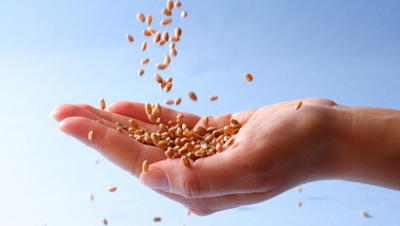
I am sure that you have read or heard that consuming more fiber is a very good idea to improve your health in general. But high-fiber foods can actually play a more specific role as well, such as lowering your risk of heart disease.
New research recently published in the British Medical Journal found a direct link between the amounts of fiber consumed and the risk of developing coronary artery disease (CAD). Coronary artery disease is the most common cause of heart disease and a condition which is strongly associated with lifestyle dynamics. For every seven grams of fiber eaten per day, there was an equal degree of risk reduction for the development of CAD.
In the U.S., it is estimated that approximately 600,000 people die every year from CAD and heart disease. Remember, this large number only represents the people who die from this disease—there are many more that have this disease and live into their golden years but they are very ill and in need of regular medical care.
This study looked at data from 22 other studies and assessed the fiber intake and rates of cardiovascular events over a 23 year time frame. The results of this work indicated that the consumption of fiber from legumes, vegetables, oats, nuts, and fruit reduced the risk of heart disease and CAD. They also found that simply adding seven grams of fiber from one serving of whole grains or legumes, or by consuming more fruits and vegetables per day can lower the risk of developing heart disease. I recommended consuming at least 25-30 grams of fiber every day.
Fiber lowers the risk of heart disease because it does two very important things:
Firstly, fiber controls the absorption of fat and cholesterol from the intestine into the bloodstream which lowers the amounts of fat being transported to the liver. The second thing that eating more fiber does is improve insulin sensitivity. It keeps blood sugar and insulin levels low after you consume it. This allows your insulin to work much better at storing fat and sugar as energy.
Improved insulin sensitivity equates to less inflammation in your coronary arteries and this implies lowered blood pressure, less blood clotting, less free radical activity, less cholesterol deposition, and less plaque formation inside the arteries that supply your heart muscle with its fresh supply of blood and oxygen.
The best sources of fiber are from whole grains like oatmeal or brown rice, vegetables, fruits, seeds (like flax), nuts, legumes and tubers. I recommend that you consume three to four servings of high-fiber foods every day to reduce the risk of CAD.
Sources:
Weber, B., “High-fiber diet linked to lower risk of heart disease,” Medical News Today web site; http://www.medicalnewstoday.com/articles/270378.php. Last accessed, Dec.31/13.
Burley,V., et al., “Dietary fibre intake and risk of cardiovascular disease: systematic review and meta-analysis,” BMJ 2013;347: f6879













